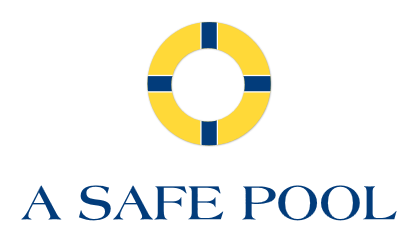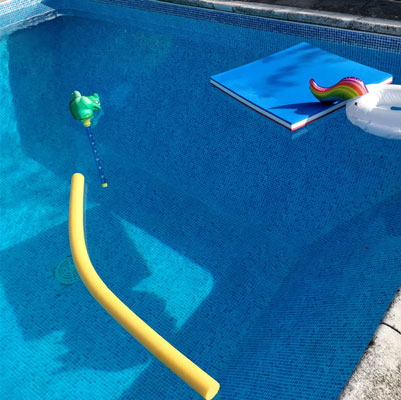Swimming cramps can be debilitating, especially in less-experienced swimmers who may find themselves suddenly hobbled in an area of the pool at the edge of their swimming level. Abdominal, calf, and foot cramps while swimming are all common occurrences that are part of growing as a swimmer who’s familiar with the way their body moves and responds in water. Understanding why they happen and how to prevent them is an important part of this growth that will help you swim at a higher level and make your pool experience safer and more comfortable.
What A Cramp Is
At their core, swimming cramps are violent, uncontrolled muscle spasms that lead to painful contractions of a muscle or muscle group. It can be spasmodic, flexing and relaxing rapidly and painfully, or a single, lasting contraction that will not relax. These contractions can interfere with the rhythm of your swimming, throwing off your timing at best, or can be severe enough to impede muscle function and create a dangerous situation in deep water.
Cramps happen when the signals your body sends to your muscles begin to become jumbled. Several distinct situations can cause this.
- Dehydration – When you don’t have enough water, your body stops working efficiently. Waste products aren’t eliminated from cells fast enough; meanwhile nutrients and oxygenated blood are slower to arrive. This can degrade muscle performance and cause an electrolyte imbalance leading to swimming cramps.
- Electrolyte Imbalance – Even if you’ve been drinking enough water, not eating foods or drinking beverages rich in electrolytes can lead to cramps. These salts help your body communicate with itself properly, and if they’re out of balance, so is the communication to your muscles.
- Lack Of Conditioning – Particularly in foot cramps while swimming, muscles and tissues that become fatigued due to over use or when you’re not used to using them can develop micro-tears, such as in the plantar fascia of your foot. In addition, the body has not trained itself on how to process exertion in the area, leading to a lack of sufficient circulation bringing much-needed oxygen.
What To Do If You Get Swimming Cramps
Get to safety. Your first concern should be removing yourself from a dangerous situation. If you are near an edge that will allow you to get out of the water, you should do so. If you are in deeper water and not near an edge or ladder, make your way as safely as possible to one so you can exit the pool and work on the cramp. If swimming is impossible, attempt to float yourself to the edge of the pool. Some cramps can be gently massaged out, while others may take additional attention.
How To Prevent Cramps
The easiest way to fight through swimming cramps is to not have them in the first place. The first step of avoiding cramps is understanding the conditions in your body that lead to them, then taking active steps to mitigate those conditions.
- Stay Hydrated – The first step to avoiding cramps is making sure you’re staying hydrated. This includes drinking plenty of water, but can also mean getting electrolyte-rich sports drinks that give your body the salts it needs for better performance. There are plenty on the market, so do your research and find the one that works best to support your body’s needs.
- Eat A Healthy Diet – Well fed muscles perform better and get fewer swimming cramps. Aim for a balanced diet that includes plenty of protein to help you build stronger muscles, healthy fats to support proper revery and cell growth, and carbs that provide ready energy for your muscles to use while swimming. This should also provide a wealth of vitamins and minerals your body can break down and put to use in helping it stay healthy and active.
- Train Your Body Patiently – Because swimming is considered low-impact, many people don’t take the time to acclimate their body to increased activity. Whether you’re just starting out, getting back into a regular routine, or taking your routine to the next level, it’s important to start slow and work up to your goals. This helps you avoid overworking your body and helps prevent injuries.
- Take Time To Stretch – Stretching is important for any exercise or sport regimen, and it can be a vital part of keeping swimming cramps at bay.
- Plantar Fascia – Stand with one foot directly in front of the other, heel to toe, with your front toes slightly elevated on a step, platform, or the like. Bend both knees slowly until you feel the stretch in the bottom of your leading foot. Slowly straighten your knees to your starting position. Repeat with both feet twice. This is perfect is you frequently suffer from foot cramps while swimming.
- Soleus – This stretch helps work the back of your lower leg and helps ease both foot and calf cramps. Lean forward against a wall with your feet heel to toe. Bend both knees, lowering yourself while keeping your heels on the floor until you feel the stretch. Slowly return to the starting position and repeat twice for each leg.
- Gastrocnemius – This stretch works your lower leg from heel to knee. Lean against a wall with your feet in the same position as before, but this time as your front leg bends at the knee, keep your back leg straight and heel planted firmly on the ground until your feel the full stretch. Return slowly to the starting position and repeat twice with each leg. This really works through your calves to prevent swimming cramps in those muscle groups.
Safety First
Swimming can be and healthy, fun way to exercise. Just make sure you’re listening to your body and staying safe. We’re always ready to help you create a safer pool area with removable pool safety fencing and pool safety covers. Contact A Safe Pool today for a safer pool for your family.

